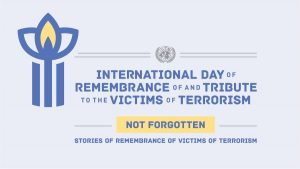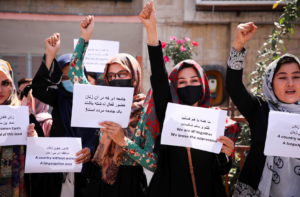BALTIMORE, Md. — On Sunday morning at Memorial Episcopal Church, the sound of hymns, readings and sermons fill the stillness.
The stone church sits on a quiet street in Baltimore, where it has stood since the 19th century.
“This church was founded in 1860,” said Rev. Grey Maggiano. “My father was a historian and so whenever I am confronted with a piece of history, I’m both kind of excited but also a little intimidated.”
Memorial Episcopal Church is full of history. At times, a deeply disturbing history.
“The folks that came to found Memorial were very pro-slavery and pro-confederacy,” said Rev. Maggiano.
The profits from slaveholding plantations helped build the church, which did not integrate until the late 1960s.
“[During] that whole period, the church was advocating for segregation, segregation as policies and laws,” Rev. Maggiano said.
Yet, nothing could’ve prepared them for how the church’s history was about to reach out and touch them in the present.
“I am actually assigned to the church,” said Deacon Natalie Conway.
It all started when Deacon Conway started looking into her family’s genealogy, only to learn that one of the two main church founders had enslaved her family.
“I was like, ‘Are you kidding me?’” she recalled thinking at the time. “My first inclination was to take a sledgehammer and knock those plaques down. The second inclination was, ‘I can’t stay here and this is not where I want to be.’”
When she shared what she found out with Rev. Maggiano, memorial plaques to the slaveholding founders were covered, later removed, and placed outside in the back of the church.
Deacon Conway decided to stay.
“And God said, ‘Why do you think I put you there?’” she said.
However, the church felt more needed to be done.
“I think when Natalie came forward with her story, it brought all of that into focus,” Rev. Maggiano said, “and that’s how reparations became part of the conversation.”
Reparations are often framed as simple financial compensation. However, Memorial Episcopal is going about it a little differently.
Enter Anthony Daryll Francis.
“It’s a combination of building relationships with community organizers and leaders who are already doing the work,” he said.
As the church’s reparations organizer, Francis works to find local nonprofits that are already doing work in the Black community in Baltimore.
“For Grey and them to be accountable for their past and then to want to move forward and help others move forward that they have wronged in the past is really, I think, a big part of the battle,” Francis said.
The church’s reparations program focus on four main pillars: education, environmental justice, housing and criminal justice.
Through fundraising, they’ve raised $100,000 for the effort, so far, with plans to set aside $500,000 over the next five years.
Memorial Episcopal is not alone, though. There are churches in New York, Virginia, Georgia and Texas starting similar reparations programs.
On this Sunday, churchgoers at Memorial Episcopal listened to a presentation focused on reparations and additional help needed in education.
“I was struck by the importance of looking at each of the children in our schools as individuals and not as a cipher,” said Pam Fleming, who attends the church.
While Memorial Episcopal started out doing this independent of their national church leadership, that is about to change.
“The Bishops of the Episcopal Church just voted yesterday to set aside a portion of the Episcopal National Endowment for reparations and reconciliation work,” Rev. Maggiano said.
It is something that they view as beyond political.
“We based all of our work in Isaiah 58, which talks about repairing the breach, becoming restorers of the streets to live in,” Rev. Maggiano said. “That we are responsible for that reparation and that healing, helps people to understand this outside of the political dynamic.”
It is work that they see as a higher calling.




